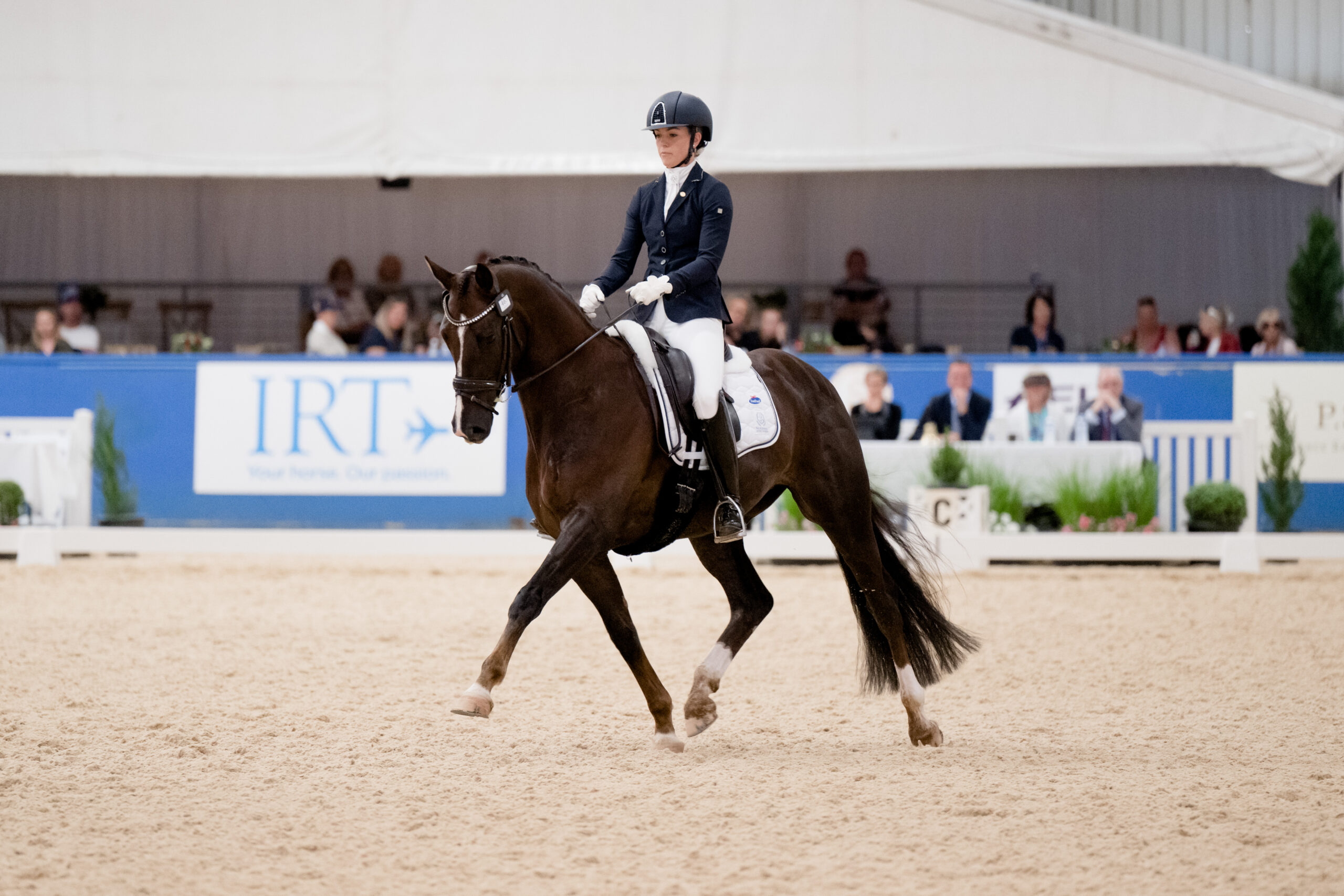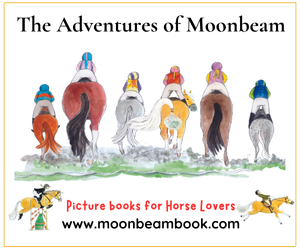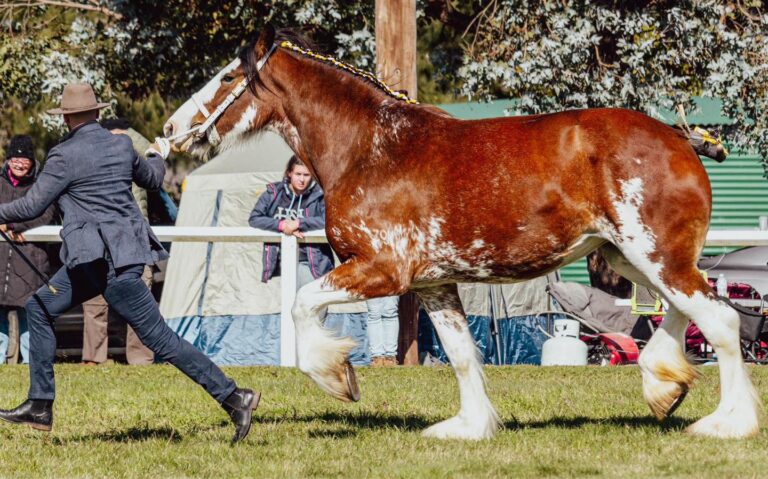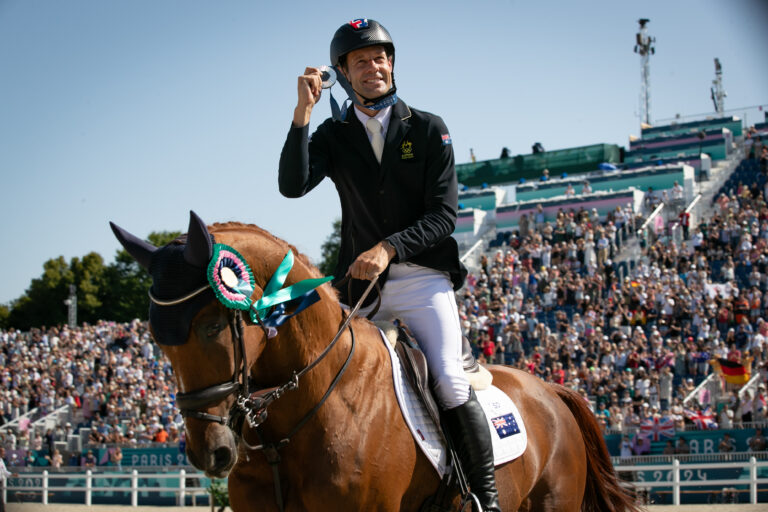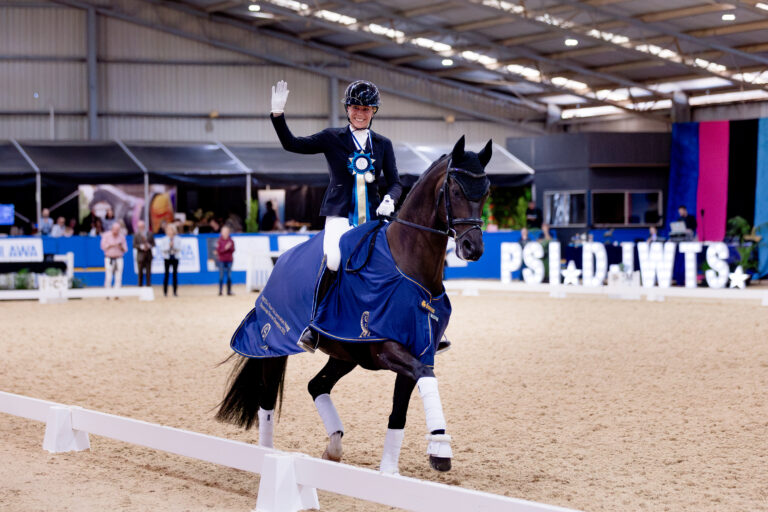It’s that fabulous time of the year again when it’s P.S.I. Dressage & Jumping with the Stars (DJWTS). This national young horse final originated 27 years ago! It includes four, five, six, and now seven-year-old classes for dressage horses and ponies. It’s come a long way since its inception, and there is way more on offer than just young dressage horse classes. There is a full program of young jumping horse classes and an FEI Jumping World Cup qualifier.
Read more about the history of DJWTS in the February 2023 issue of Equestrian Life here.
Read more about the history of the Aachen Challenge in the March 2022 issue of Equestrian Life here.
The dressage side has CDI classes: Junior, Young Rider and Under 25, as well as the FEI Dressage World Cup qualifier which includes a Grand Prix and the ever-popular Freestyles. Then there is the Aachen Challenge, and who can look past all the amazing equestrian associated trade stands and of course the champagne bar.
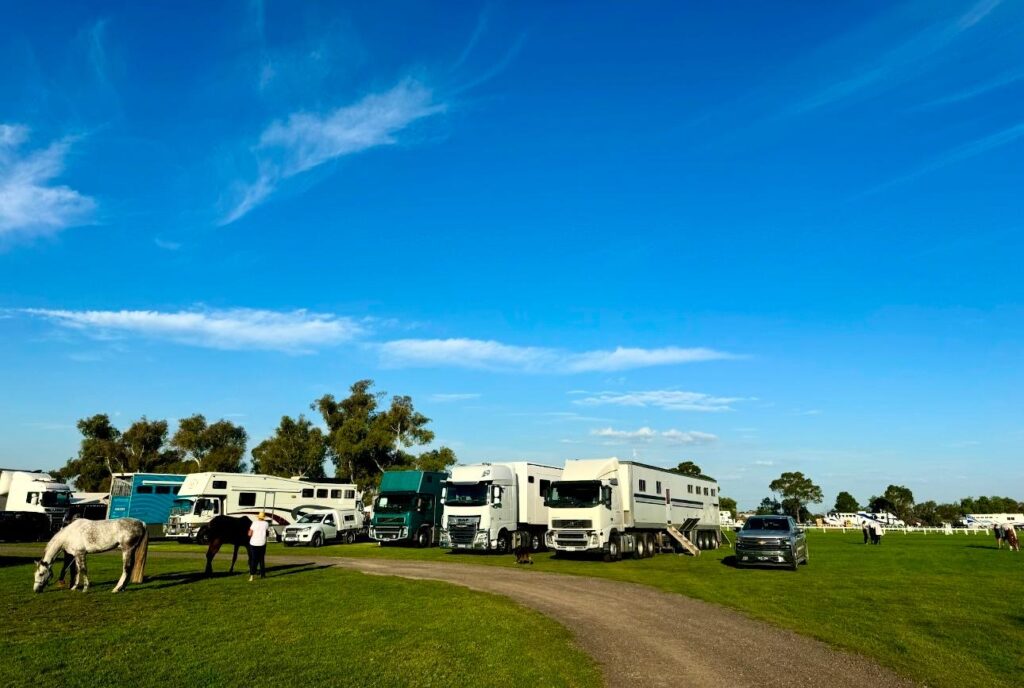
Emphasis on young horses
The emphasis is on the breeding, riding and judging of the dressage and jumping young horses. Over the years the breeding of horses for modern sport has changed, as has the riding and the presentation.
Back in the beginning of these classes, it was so the breeders in Germany could all get together and sell their progeny. Of course, back then it was all about the fancier and the bigger, more flashy forward movers… that was what everyone was looking for, so it was all about the flamboyance and ground covering paces that attracted the buyers and so the breeding was along these lines.
As the years have progressed, the sport of dressage has become aware that these bigger movers and bigger types were flamboyant and strong, but lacked elasticity, elegance, lightness and the ability to collect that the modern dressage horses has now developed into. As a consequence, this heavier type has dissipated and a more elegant type is being produced via breeding programs. Of course, now with AI and stallions from all over the word being available for use, the types are taken from the best of the best. It is interesting to see the wonderful Australian-bred horses now, and that Australians have quality horses to choose from here in their own country rather than having to travel and find progeny overseas.
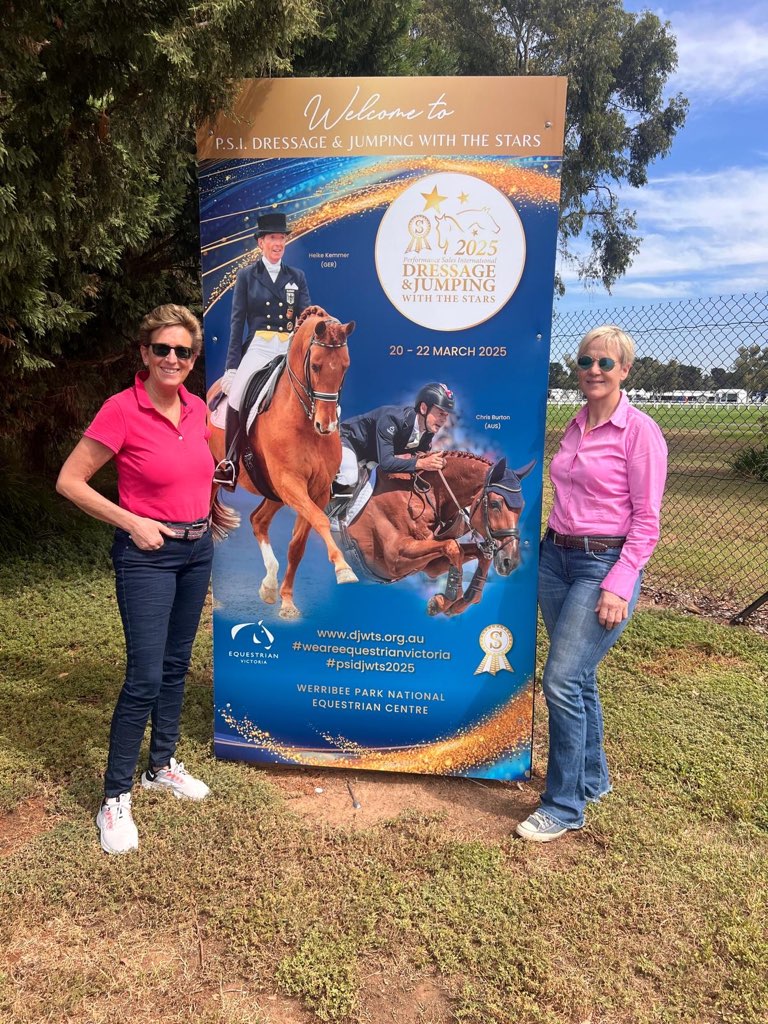
Insa Hansen: “The riders have to be way more in tune mentally with these horses…”
This year we are lucky to have Insa Hansen from the naming rights sponsor company, Performance Sales International (P.S.I.) representing the Kasselmann family. Insa has been associated with Hof Kasselmann since 1985; she almost family! It was very good to catch up with Insa and get some ideas before the beginning of the classes as to the changes that have happened in the sport over the years. Insa is probably one of the most well-known and prolific young horse riders in Germany, with many, many accolades and championships to her name. If anyone can comment and has seen changes in the presentation of young dressage horses and the change in breeding, style riding and training, it would be Insa.
Insa has been a huge part and influence on so many riders, horses and Hof Kasselmann in general. She started showing young horses when she was only 16 years old, and has seen a lot of changes. On asking Insa her thoughts about the progression of the breeding and showing of young horses, and associated trends over the last 40 years, she replied:
“Back when I first started riding young horses, the types were much heavier; they were very bold and strong types,” says Insa. “Their conformation was heavier with heavier thicker necks and less flexibility at the poll. Their temperament from their breeding was more placid than the modern-day Warmblood. They were good to ride, but very different to what we have nowadays. For sure back then they were big, strong movers and by nature weren’t of the elastic, massive moving, elegant types of this day.
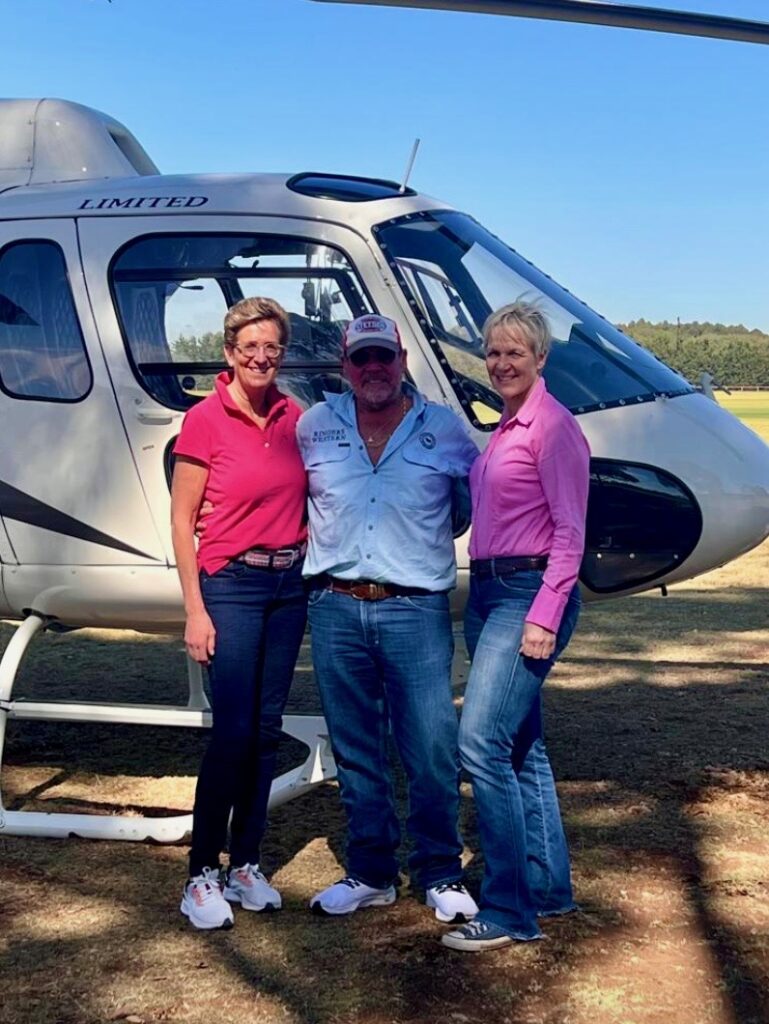
“The whole style of producing this more elegant, more refined type of dressage horse has needed a whole new way of thinking about the entire development of the horse for the sport. The riders have to be way more in tune mentally with these horses. They have to have plenty of time to develop the strength to show their elastic paces to the best. As a consequence, the riding has to show ways in which to improve the horse’s balance, which in turn provides the confidence to produce ease of movement that is unconstrained and not forced in any way, but allowed. By nature, they are more elastic and gymnastic types but lack the strength to carry. This means that riders have to be very careful in the way they ride them, from the back end through the body to the bridle and encourage a good balance, to develop within the horse its own strength to carry and want to perform.
“Along with this of course the realisation of making certain the horses are worked in accordance with their own strength and ability. They are a lot more sensitive mentally and physically these days, and the two go hand-in-hand. As a consequence, dressage riders nowadays have to be more thoughtful and smart about the way the horses are developed.
“I have loved riding all the types; the modern day horses are often a more comfortable and easy ride physically, but they certainly put you to the test mentally to make certain that you are always thoughtful about their mental state as well as their physical. To see the development in getting better balance in these young horses and to see them ridden along the right way is very important.
“The modern horses are judged a little differently because judges have to have the ability to see a natural gait and a natural way of going, combined with correct riding and training from the back to the front along the right way to produce these naturally gifted horses on the road towards Grand Prix.
“The more you think about it, the more you ride these horses, and the more you watch, you never stop learning about ways to see these horses improve. The gymnastic exercises and way horses are looked after, trained and ridden nowadays has come a long way and everyone is now very aware of the correct way to develop dressage horses.
“It’s a wonderful sport and there is nothing that gives me greater pleasure than riding and watching beautiful young horses that are trained in a good way. I have been very lucky to ride some of the best horses in the world. Each and every one is different in its own way and for sure I love the training. I love the ability to see a horse worked along the correct lines and to see them happy, enjoying their work, getting stronger, and showing more and more enthusiasm for the sport.
“This is my first trip to Australia, and I very much look forward to seeing the breeding and the riding in the coming days.”
